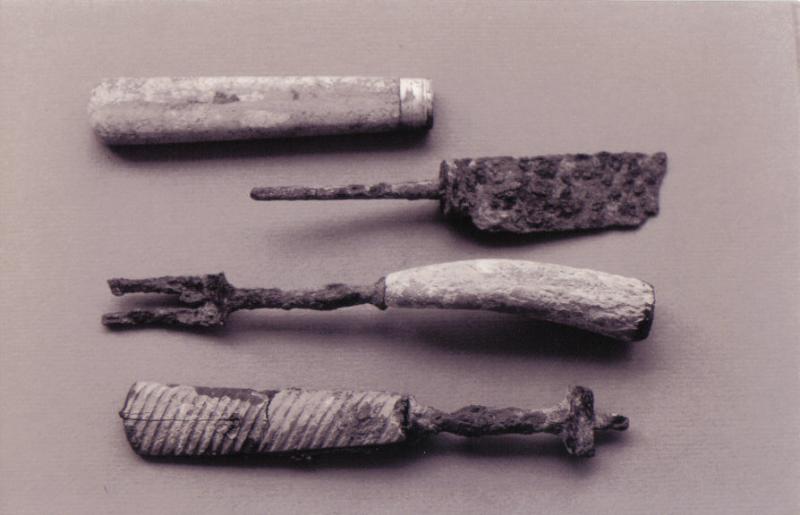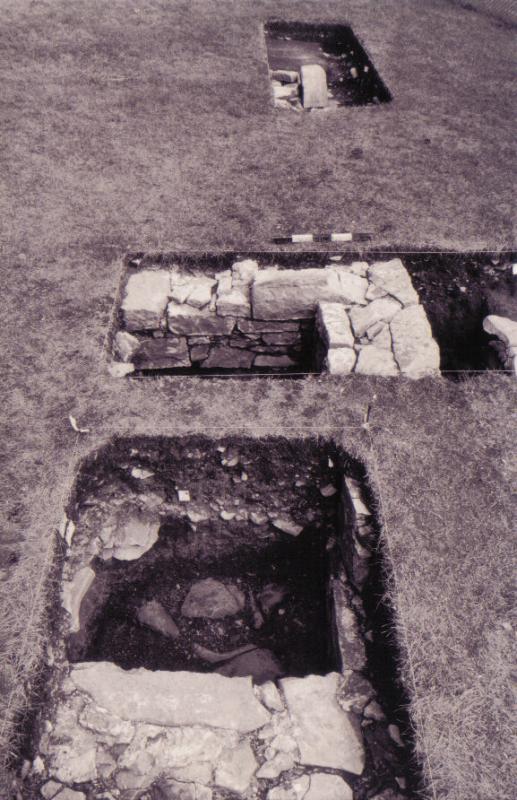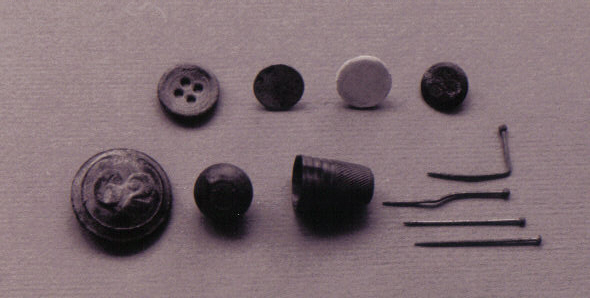 A total 77 children (ages 7 to 16) and adults participated in this year’s “Can You Dig It?”© Summer Archaeology Program. All participated in all aspects of the excavation, providing approximately 1,561 hours of field time! The Naval Cottages at the Royal Military College of Canada were located on the western portion of the Point, located on the western shore facing downtown Kingston.
A total 77 children (ages 7 to 16) and adults participated in this year’s “Can You Dig It?”© Summer Archaeology Program. All participated in all aspects of the excavation, providing approximately 1,561 hours of field time! The Naval Cottages at the Royal Military College of Canada were located on the western portion of the Point, located on the western shore facing downtown Kingston.
With the outbreak of the War of 1812, a blockhouse was built on Point Henry and the position of the Kingston dockyard was formalized as the British naval base for the Great Lakes fleet. Batteries were hastily constructed on Mississauga Point and Point Frederick which repelled the November American attack. Defenses were strengthened throughout the war, a blockhouse was built on Point Frederick to protect the dockyard and the first Fort Henry was constructed. The dockyard at Kingston became heavily involved in the shipbuilding race which provided the means to end the war.
It is obvio us that Kingston was a military or garrison town with soldiers and sailors, but who actually worked at the dockyard and who built the ships? The term artificer was often used on maps and in documents and refers to craftsmen, skilled mechanics and inventors related to the military or navy, they were not, however, soldiers or sailors.
us that Kingston was a military or garrison town with soldiers and sailors, but who actually worked at the dockyard and who built the ships? The term artificer was often used on maps and in documents and refers to craftsmen, skilled mechanics and inventors related to the military or navy, they were not, however, soldiers or sailors.
The site of the Naval Cottages at RMC was chosen for the possibility of investigating the site to gather information on military and civilian occupation relating to the Dockyard Period of the first half of the 19th century was of interest. To date, no formal archaeological excavations have been undertaken on Point Frederick and little is known of the development of the Dockyard from the workers' point of view. In addition, archival research has indicated that the cottages were constructed in 1822 and a destructive fire terminated occupation in one area in 1868. The 1868 fire destroyed the southerly six cottages and one additional was demolished to create a fire-break. These were completely removed in 1875 when the College was created and the surviving range of nine northerly cottages remained in use until 1910.
In general, a large number of artifacts were recovered, and a large amount of structural remains were located. A total of 8,188 artifacts representing the late 18th and first half of the 19th century were uncovered. Due to the small date range within the lots and the overall context of these lots within the site, it can be said that most of the artifacts have come from construction, occupation and destruction of the site dating from 1822 to 1868.  Many interesting artifacts were excavated, such as an 1816 Wellington half penny token; an iron knife; a 62nd Regiment copper alloy button which had been manufactured in London; an 18mm lead musket ball; an anchor swivel for a fireplace; several pieces of hardware for a trunk including 3 pieces of reinforcements and two hinges; the metal remains of a wooden pail; and 3 centre-fire cartridges possibly from the Snider-Enfield rifle which was issued to the RCRR's.
Many interesting artifacts were excavated, such as an 1816 Wellington half penny token; an iron knife; a 62nd Regiment copper alloy button which had been manufactured in London; an 18mm lead musket ball; an anchor swivel for a fireplace; several pieces of hardware for a trunk including 3 pieces of reinforcements and two hinges; the metal remains of a wooden pail; and 3 centre-fire cartridges possibly from the Snider-Enfield rifle which was issued to the RCRR's.

 A total 77 children (ages 7 to 16) and adults participated in this year’s “Can You Dig It?”© Summer Archaeology Program. All participated in all aspects of the excavation, providing approximately 1,561 hours of field time! The Naval Cottages at the Royal Military College of Canada were located on the western portion of the Point, located on the western shore facing downtown Kingston.
A total 77 children (ages 7 to 16) and adults participated in this year’s “Can You Dig It?”© Summer Archaeology Program. All participated in all aspects of the excavation, providing approximately 1,561 hours of field time! The Naval Cottages at the Royal Military College of Canada were located on the western portion of the Point, located on the western shore facing downtown Kingston. us that Kingston was a military or garrison town with soldiers and sailors, but who actually worked at the dockyard and who built the ships? The term artificer was often used on maps and in documents and refers to craftsmen, skilled mechanics and inventors related to the military or navy, they were not, however, soldiers or sailors.
us that Kingston was a military or garrison town with soldiers and sailors, but who actually worked at the dockyard and who built the ships? The term artificer was often used on maps and in documents and refers to craftsmen, skilled mechanics and inventors related to the military or navy, they were not, however, soldiers or sailors. Many interesting artifacts were excavated, such as an 1816 Wellington half penny token; an iron knife; a 62nd Regiment copper alloy button which had been manufactured in London; an 18mm lead musket ball; an anchor swivel for a fireplace; several pieces of hardware for a trunk including 3 pieces of reinforcements and two hinges; the metal remains of a wooden pail; and 3 centre-fire cartridges possibly from the Snider-Enfield rifle which was issued to the RCRR's.
Many interesting artifacts were excavated, such as an 1816 Wellington half penny token; an iron knife; a 62nd Regiment copper alloy button which had been manufactured in London; an 18mm lead musket ball; an anchor swivel for a fireplace; several pieces of hardware for a trunk including 3 pieces of reinforcements and two hinges; the metal remains of a wooden pail; and 3 centre-fire cartridges possibly from the Snider-Enfield rifle which was issued to the RCRR's.